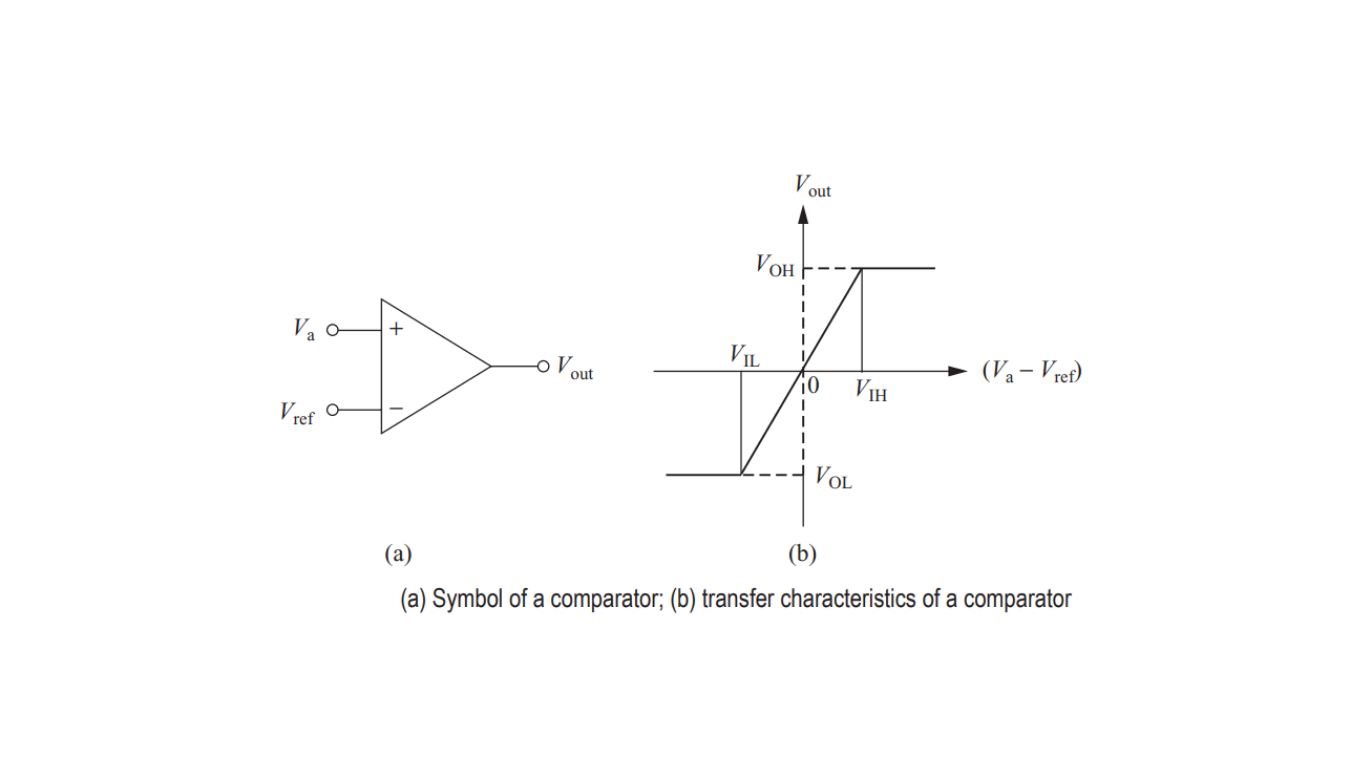Let’s discuss the operation and characteristics of a comparator, which is used to compare an analog signal with a reference voltage and produce a digital output.
Comparator Overview
A comparator is a fundamental electronic component used in various applications, including analog-to-digital converters (ADCs). Its primary function is to compare an incoming analog signal with a reference voltage and generate a binary output, typically high or low, based on the comparison result. The symbolic representation of a comparator is shown in Figure 1(a).

Comparator Operation
- When the analog input signal is greater than the reference voltage, the output of the comparator goes high.
- Conversely, when the analog input signal is less than the reference voltage, the output goes low.
Transfer Characteristics of Comparator
Figure 5.42(b) illustrates the transfer characteristics of a comparator. The dotted line represents ideal behavior. Key points to note include:
- VOH and VOL: These represent the upper and lower limits of the output voltage, respectively.
- Gain (Av): The gain of the comparator is defined as the ratio of the change in output voltage to the change in input voltage, and it is expressed as Av = (VOH – VOL) / (VIH – VIL).
- As the gain Av approaches infinity, (VIH – VIL) approaches zero, and the comparator behaves ideally.
- For small differences between the input and reference voltage (VIL < DVin < VIH), the output is highly amplified.
Dynamic Behavior of Comparator
When a step signal is applied at the analog input of the comparator, the output exhibits a step response. However, there is a finite delay time between the input and output signals, known as the propagation delay. This delay is depicted in Figure 2.
![]()
- Propagation Delay: The propagation delay (t_p) is determined by the slew rate (SR) of the comparator and is given by t_p = (VOH – VOL) / SR.
Using a Two-Stage CMOS Op-Amp as a Comparator
Comparators require a differential input and have a high gain. Therefore, a two-stage CMOS operational amplifier (op-amp) can be employed as a comparator, as shown in Figure 2. In this open-loop configuration, compensation, which is typically required in op-amp applications, is not necessary.
In summary, a comparator is a critical component for comparing analog signals to reference voltages, producing digital outputs. Its transfer characteristics and dynamic behavior, including propagation delay, are important considerations in its design and use. A two-stage CMOS op-amp can be adapted for comparator applications, offering advantages in certain scenarios.